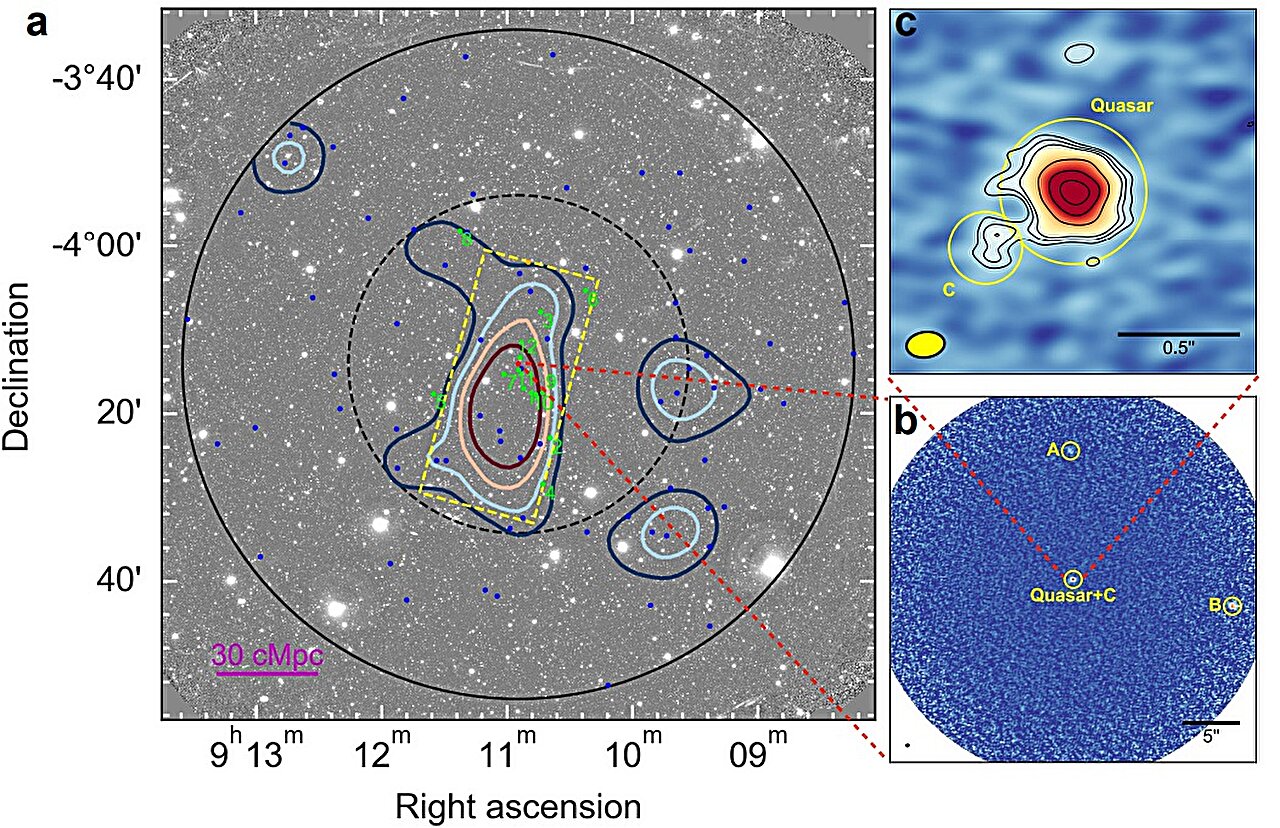Astronomers at the Steward Observatory in Tucson, Arizona, and other locations have made an exciting discovery – a new massive protocluster surrounding a luminous quasar known as J0910–0414. This finding was detailed in a paper published on February 2 on the pre-print server arXiv.
Protoclusters of galaxies, the precursors of clusters, are of particular interest to astronomers. These objects, which are found at high redshifts (over 2.0), could offer crucial insights into the early stages of the universe.
Using the Hyper Suprime-Cam (HSC) on the Subaru Telescope, the Atacama Large Millimeter/submillimeter Array (ALMA), and other ground-based facilities, a team of astronomers led by Feige Wang from the Steward Observatory observed J0910–0414, a luminous quasar at a redshift of 6.63. This quasar is home to one of the most massive supermassive black holes (approximately 3.6 billion solar masses) at such a high redshift, making it an ideal location to search for galaxy overdensities and new galaxy clusters, as well as the earliest protoclusters.
“The Subaru/HSC observations were conducted from November 2019 to January 2020. We observed this quasar field using i2, z, and NB926 filters, with on-source exposure times of 150 minutes, 240 minutes, and 313 minutes, respectively,” the researchers explained in their paper.
The observations revealed a protocluster centered around J0910–0414, which includes at least three carbon [C II] line and 12 Lyhman-alpha emitters (LAEs) at the quasar’s redshift. The images also depict a double-peaked LAE in the vicinity of the quasar.
2024-02-14 02:00:04
Link from phys.org
